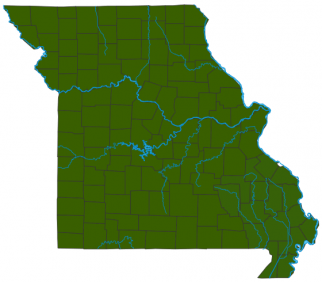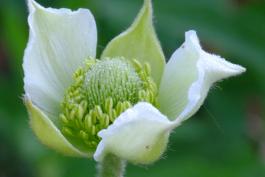Media

Scientific Name
Anemone virginiana
Family
Ranunculaceae (crowfoots)
Description
Perennial herb with a erect, unbranched stalk. Flowers about 1 inch across, usually 1–3, with 5 off-white or greenish-white sepals (there are no petals). Fruits are densely clustered at the center in a thimble-shaped dome, thus the name “thimbleweed.” Blooms April–August. Leaves 3-divided with deeply cleft and large-toothed leaflets, the basal leaves and the stem leaves on petioles, the basal on very long stems. Fruits when mature are a fluffy, white mass of seeds that often remains on the stalk through the winter.
Size
Height: to 3 feet tall.
Where To Find

Statewide.
Habitat and Conservation
Occurs in rocky or dry open woods on slopes or in valleys and in prairies.
Human Connections
The Missouri Botanical Garden recommends this species for shaded and woodland gardens as well as for naturalized or native-plant gardens. It tolerates dry, shallow, and rocky soils as well as dense shade. Make sure you obtain your plants from reputable nurseries and not from the wild!
Ecosystem Connections
Several types of insects collect nectar from the flowers. Apparently the plant is rarely eaten by mammals because of chemicals that irritate the mouth and digestive tract.
Title
Media Gallery
Image

Credit
Charles T. Bryson, USDA Agricultural Research Service, Bugwood.org
Right to Use
Image

Credit
Submitted by Steve Bizub
Right to Use
Image

Image

Title
Similar Species
About Wildflowers, Grasses and Other Nonwoody Plants in Missouri
A very simple way of thinking about the green world is to divide the vascular plants into two groups: woody and nonwoody (or herbaceous). But this is an artificial division; many plant families include some species that are woody and some that are not. The diversity of nonwoody vascular plants is staggering! Think of all the ferns, grasses, sedges, lilies, peas, sunflowers, nightshades, milkweeds, mustards, mints, and mallows — weeds and wildflowers — and many more!





















